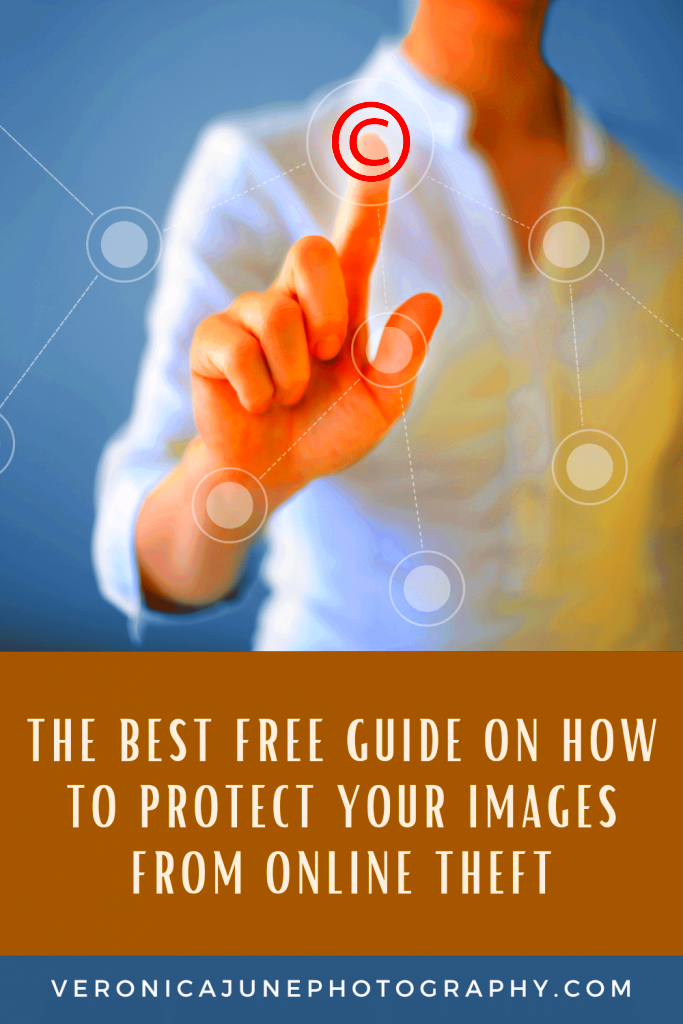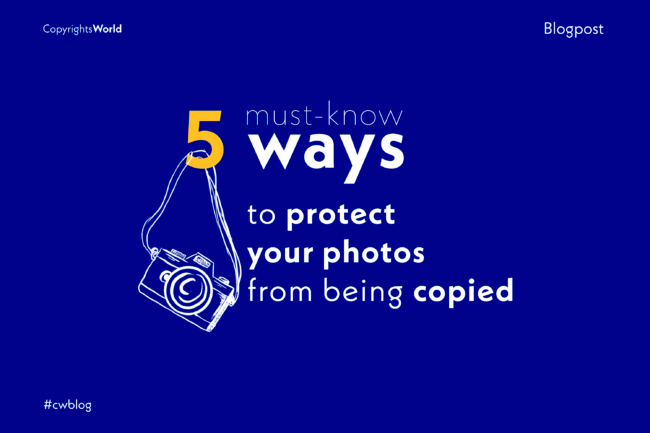When it comes to protecting your images, understanding copyright is crucial. Copyright gives you exclusive rights over your creative work, meaning you control how it's used and shared. It's like having a shield that guards your artistic efforts. If someone uses your images without permission, they are infringing on your copyright, which can lead to legal issues.
In many countries, copyright is automatically granted as soon as you create an original work. This means you don't need to register your images to have copyright protection. However, registering your work can strengthen your legal position if you ever need to take action against unauthorized use.
Here are some key points to remember about copyright:
- Originality is Key: Your image must be your own creation to be protected by copyright.
- Duration of Copyright: Copyright usually lasts for the creator's lifetime plus an additional number of years, depending on the country.
- Rights Granted: Copyright gives you the right to reproduce, distribute, and display your work.
Know Different Types of Image Licenses

Images can be shared and used under various licenses, each offering different levels of protection and permission. Knowing these licenses is essential to safeguarding your work.
Here’s a breakdown of common image licenses:
| License Type | Description |
|---|---|
| Royalty-Free | Allows users to pay once and use the image multiple times without paying royalties. |
| Rights-Managed | Users must pay based on specific usage terms, such as duration, geography, and medium. |
| Creative Commons | Allows creators to specify how others can use their images, often with credit requirements. |
| Public Domain | Images not protected by copyright, allowing anyone to use them without permission. |
Choosing the right license for your images can help you maintain control over your work while allowing others to use it under specific conditions.
Also Read This: Adding Adobe Stock Libraries to Premiere Pro
Use Watermarks Effectively
Watermarking is a smart way to protect your images from unauthorized use. By adding a watermark, you make it clear who owns the image, which can deter potential infringers. But how do you create effective watermarks?
Here are some tips to consider:
- Keep It Subtle: A watermark should not distract from the image but should be noticeable enough to identify ownership.
- Position Wisely: Place your watermark in a location where it can't be easily cropped out, such as across the center or in a corner.
- Use Transparency: A semi-transparent watermark allows viewers to see the image while still identifying you as the owner.
- Include Your Brand: Consider adding your website URL or logo to strengthen your brand identity.
Remember, while watermarks can help protect your images, they are not foolproof. It's always a good idea to combine watermarking with other protective measures, such as copyright registration and proper licensing.
Also Read This: Utilizing Behance Fonts for Your Projects
Explore Digital Rights Management Solutions
Digital Rights Management (DRM) solutions play a crucial role in protecting your images online. These tools help you manage how your images are used, ensuring that only authorized users can access and share them. Think of DRM as your digital bodyguard, keeping a watchful eye on your creative works.
There are several DRM options available, each designed to suit different needs. Here’s a look at some popular DRM solutions:
- Image Protection Services: Companies like Digimarc offer services that embed digital watermarks into your images. These invisible markers can help track unauthorized use across the web.
- Content Management Systems (CMS): Many CMS platforms come with built-in DRM features that allow you to restrict access to your images. This is especially useful for stock image websites.
- Subscription Services: Services like Adobe Stock offer DRM protection by ensuring that downloaded images can only be used within the terms set by the creator.
While DRM can help protect your images, it’s important to choose a solution that fits your specific needs and budget. A well-implemented DRM strategy can give you peace of mind and allow you to focus on creating rather than worrying about theft.
Also Read This: How to Print Multiple Images on One Page
Monitor Your Images Online
Keeping an eye on your images online is essential for catching unauthorized use early. By actively monitoring your images, you can take timely action against those who infringe on your copyright. Fortunately, there are several effective ways to do this.
Here are some methods to help you monitor your images:
- Reverse Image Search: Tools like Google Images or TinEye allow you to upload your images and find where they appear on the internet. This is a great way to discover unauthorized usage.
- Set Up Google Alerts: You can create alerts for specific keywords related to your images. This way, you'll be notified when your images are mentioned online.
- Use Monitoring Services: Some services specialize in tracking your images across the web. They can provide detailed reports and notifications if they find unauthorized use.
Regularly monitoring your images not only helps protect your rights but also raises awareness about the value of your work. By knowing where your images are being used, you can take appropriate action when needed.
Also Read This: 123RF vs 500px: Selecting the Right Platform for Selling Photos
Take Legal Action When Necessary
Sometimes, despite your best efforts, you may find that someone is using your images without permission. In such cases, taking legal action may be necessary to protect your rights and seek compensation for your work. While this might sound daunting, knowing your options can make the process easier.
Here are the steps you can take if you find your images being misused:
- Gather Evidence: Collect screenshots, URLs, and any relevant information about the unauthorized use. This will help support your case.
- Send a Cease and Desist Letter: Often, a simple letter requesting the unauthorized user to stop using your images can resolve the issue. Many people may not even realize they are infringing.
- Consult a Lawyer: If the issue persists, consider consulting with a lawyer who specializes in copyright law. They can guide you on the best course of action.
- Consider Legal Action: If necessary, you can file a lawsuit against the infringer. This step should be taken carefully, as it can be costly and time-consuming.
Remember, while legal action may be the last resort, it is sometimes necessary to protect your hard work and creativity. Being informed about your rights and options can help you navigate these situations with confidence.
Also Read This: Top Benefits of Using Imago Images for Your Business Visuals
Educate Yourself About Fair Use
Understanding fair use is essential for anyone working with images, whether you’re a photographer, graphic designer, or content creator. Fair use is a legal doctrine that allows limited use of copyrighted material without requiring permission from the rights holders. However, it's important to know the boundaries to avoid legal issues.
Fair use generally applies in the following situations:
- Criticism and Commentary: Using images for commentary, reviews, or critiques often falls under fair use. For example, you might include a photo in a blog post that discusses the artwork.
- News Reporting: Journalists can use images relevant to their stories, provided they don’t exploit the image or use it solely for promotional purposes.
- Education: Educational use, such as in classrooms or academic publications, may qualify as fair use, especially when the purpose is non-commercial.
- Parody: Creating a parody or satire that comments on the original work can also be considered fair use.
However, fair use isn't a blanket protection. Factors like the purpose of use, the nature of the original work, the amount used, and the effect on the market value of the original work are all considered. If you're ever unsure, consulting with a legal professional can help clarify your situation.
Also Read This: Downloading Getty Images for Free: Understanding Copyright and Licensing
FAQs About Image Protection
When it comes to protecting your images, many questions often arise. Here are some frequently asked questions that can help clarify the process:
- What is copyright, and how does it protect my images?
Copyright gives you exclusive rights to your images as soon as they are created, preventing others from using them without permission. - Do I need to register my images to have copyright?
No, copyright is automatic, but registering can help strengthen your case in legal disputes. - What is a watermark, and why should I use one?
A watermark is a visible or invisible mark on your images that indicates ownership. It helps deter unauthorized use. - How can I monitor my images online?
You can use reverse image search tools, set up Google Alerts, or even employ monitoring services to track where your images appear. - What should I do if I find someone using my images without permission?
Start by gathering evidence and consider sending a cease and desist letter. If necessary, consult with a lawyer.
Having clear answers to these questions can empower you to take better control over your creative work.
Conclusion on Protecting Your Images
Protecting your images is not just about asserting your rights; it’s about valuing your creativity and hard work. With the right knowledge and tools, you can safeguard your images from unauthorized use while still sharing your art with the world.
Start by understanding copyright basics and the different types of image licenses available. Employ watermarks and explore digital rights management solutions to enhance protection. Regularly monitor your images online to catch unauthorized use early, and educate yourself about fair use to navigate the complexities of image rights.
In the event of infringement, don’t hesitate to take legal action if necessary. Armed with this information, you’ll be better equipped to protect your images and ensure that your creativity is respected and valued.

 admin
admin








